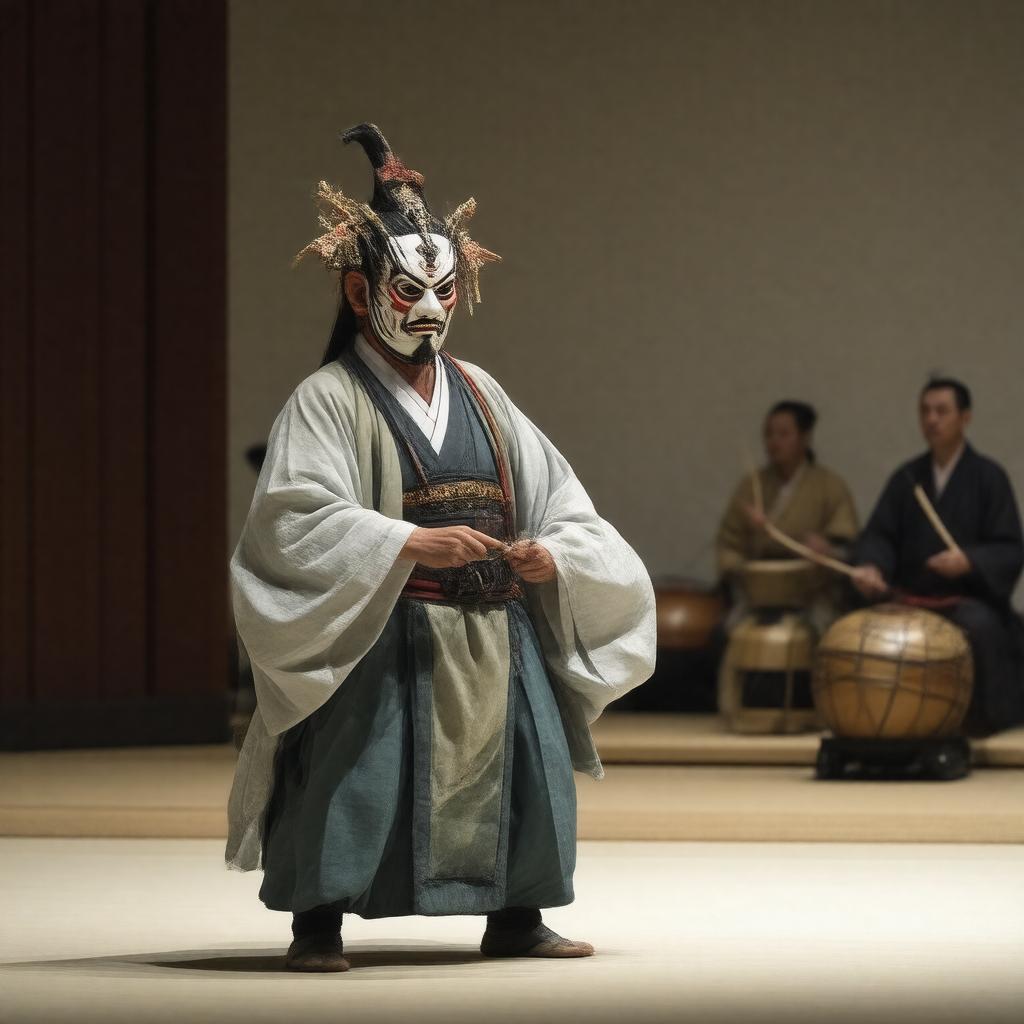Prompt
"Generate an image of a traditional Noh theatre performance on a Noh stage, featuring a shite performer wearing an elaborate mask, such as a hannya or ko-omote, and dressed in a traditional costume, including an elaborate silk robe, with a waki performer and musicians playing traditional instruments, including drums, in the background, under a dramatic lighting, with a subtle hint of a hashigakari bridgeway and a minimalist Japanese setting, in a style that captures the essence of classical Japanese theatre."

